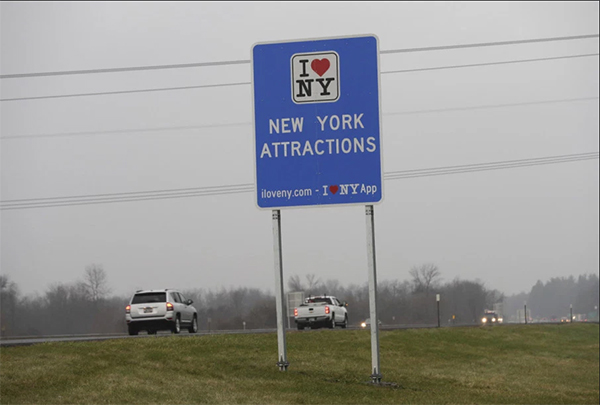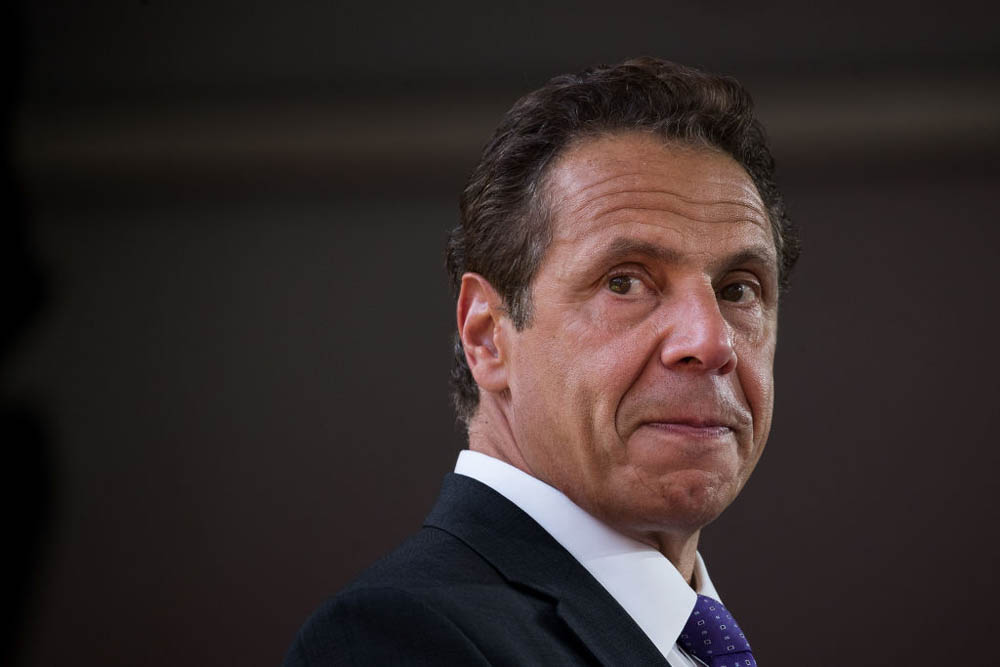The governor's Buffalo Billion and other revitalization projects have brought more headaches -- and in some cases convictions -- than jobs.
By any standard or sane measure, Gov. Andrew Cuomo should be running scared. Joseph Percoco, one of his closest advisors and friends — “my father’s third son,” Cuomo once said — was convicted of sleazy, felonious self-dealing and is scheduled to be sentenced to federal prison next week, probably for a good long time.
Meanwhile, Alain Kaloyeros, the nanotech Svengali, at one time New York state’s highest-paid public employee, has been found guilty alongside construction bigwig and generous Cuomo donor Lou Ciminelli, of rigging bids in the massive Buffalo Billion program.
“Spending on economic development has been a demonstrable failure in New York. ”
Cuomo gave Kaloyeros control over most of the Buffalo Billion scheme, which was supposed to shower upstate with taxpayer dollars and let economic development bloom.
In an effort to stay in favor with King Andrew I, Kaloyeros appears to have worked to make sure that certain preferred builders won major construction contracts; top Albany influence-peddler, Cuomo aide and donor, and Percoco-trial witness Todd Howe was also in the mix.
The project at the center of the Kaloyeros trial was the massive $750 million solar-panel factory that has since been taken over by Elon Musk’s Tesla. SolarCity RiverBend was supposed to become the largest manufacturing facility in North America, employing thousands of people and attracting billions of dollars in investment. But now, Tesla is closing solar-panel installation facilities around the country and scaling back its investment in residential solar, leaving the future of the Buffalo plant in doubt. With 600 workers on site, the state subsidy is running better than $1.2 million per job, hardly the kind of “transformative” investment that the governor promised.

But that’s no surprise, given the history of economic development boondoggles around the state. Spending on economic development has been a demonstrable failure in New York. In 2013, the nonpartisan Citizens Budget Commission estimated state expenditures on development at roughly $7 billion annually, while we lack “data to prove the investments are worthwhile.” Indeed, domestic outmigration — the net loss of residents to other states — has cost New York almost a million people under Cuomo’s time in office. While New York City is doing reasonably well, upstate is in very rough shape, with job growth only one-quarter the national average. And about 90 percent of the net jobs added upstate have been low-wage service-sector positions, not the solid, middle-class employment that we expect from massive economic-development subsidies, which never seem to pay off.
In 2014, New York “partnered” with Soraa, a California light-bulb company, to build a $90 million factory outside Syracuse. Soraa promised to bring more than 400 jobs to the region and agreed to rent the facility for $1 annually. Just as the finishing touches were put on the plant, Soraa pulled out of the deal, leaving New York’s taxpayers with an empty light-bulb factory.
Doubling down on development deals, Gov. Cuomo announced in 2016 a $600 million investment in a computer chip factory in Utica, to be run by Austrian technology company Ams AG. Six months after a celebrated groundbreaking, Ams cited “delays” as their reason for saying goodbye to upstate. The state is “working tirelessly on potential alternatives” for the site.
At least the film industry, which gets $420 million in annual tax credits from New York state, goes ahead and makes movies and TV shows here. But all the evidence suggests that they would do so anyway, without the subsidies and that the number of new jobs created by the breaks is minimal. The tax credits, incidentally, are refundable, meaning that the film companies can turn them in for cash if their tax bill is less than the credit is worth. Last year, the state also decided to extend tax credits worth $25 million each to the music and video-game industries, just in case they were thinking about moving.
Most filming takes place in New York City. That’s unfair to upstate, so Cuomo launched the infamous Syracuse Film Hub, which was funded with $15 million of public money and built by Cor Development — whose executive Steve Aiello was convicted of bribery in the Percoco case. “Hollywood comes to Onondaga!” exclaimed Cuomo. “Who would have ever guessed?”
Nobody, as it turned out: The Film Hub was a flop and is now being taken over by Onondaga County, which is hoping to get state money to fund the operating expenses on the mostly empty soundstage.
Desperate to attract jobs to an increasingly depopulated upstate, in 2013 Cuomo launched START-UP NY, a program that created tax-free zones for new companies in certain industries, in depressed areas. After four years of operation, the program has created an estimated 722 new net jobs, “not even a rounding error in a statewide economy whose 600,000 private firms employ nearly 7.6 million people,” writes E.J. McMahon of the Empire Center. START-UP NY was rolled out with great fanfare and a $47 million marketing campaign.
In 2010, while the country was in the midst of the financial crisis, Gov. David Paterson wisely ended the practice of legislative “member items,” otherwise known as “earmarks,” aka “pork.” But member items came back, in the form of disbursements through the Dormitory Authority (established during World War II in order to build dorms at state teachers’ colleges) and its subsidiary State and Municipal Facilities Program. Since 2014, the SMFP has allocated, on behalf of local elected officials, more than $1 billion to all manner of capital projects, from $50,000 for a snowplow for Pitcairn to $25 million for an outlet mall on Staten Island.
At least a snowplow will clear snow. But for what earthly purpose did Cuomo decide, in 2017, to decorate New York City bridges with lights that could be programmed to blink and change color in harmony for an estimated cost of at least $216 million? The “Harbor of Lights” plan, mercifully, was shelved, after roughly $6 million was spent on lights for the grand opening of the new Kosciuszko Bridge, to which the governor rolled up in FDR’s 1932 Packard limousine. Restoring the car only cost the state $10,000, but Cuomo promises to use it for “ceremonial opportunities” and added that President Roosevelt would have wanted it that way: “Just to leave it sitting here, I don’t think it’s what FDR would do.”

Then there’s the $8 million the governor spent putting up enormous “I ♥ NEW YORK” signs along the state’s highways. These signs are so egregious that the federal Department of Transportation ruled them a safety hazard and fined the state $14 million. If New York doesn’t take them down by September, that money isn’t coming back.
Cuomo hasn’t been accused of venality, and there is no indication that he is out to enrich himself personally. But in his efforts to vacuum up as much in the way of campaign contributions, he hasn’t let much stand in his way. Despite a 2007 executive order forbidding political appointees from donating to the governor who appointed them, Cuomo has accepted hundreds of thousands of dollars from such appointees and hundreds of thousands more from their wives, children and associated business entities. His office has shrugged off suggestions that state government appears to be stocked with individuals who pay for their posts, saying that the original order is inapplicable in most of the cases in question.
And who says no? Though the governor ran for re-election in 2014 promising to sweep out Albany’s Augean stables of filth, he shut down his good-government Moreland Commission to Investigate Public Corruption when it took what to him was a wrong turn. When the commission started looking into a state vendor who had donated to Cuomo’s campaign, the governor rolled down the gate on its work.
“It’s my commission,” explained the governor, in terms that the Emperor Caligula would have found sympathetic. “My subpoena power, my Moreland Commission. I can appoint it, I can disband it. I appoint you, I can un-appoint you tomorrow . . . It’s my commission. I can’t ‘interfere’ with it, because it is mine. It is controlled by me.”
“In a normal political climate, all this foolishness and proximity to heavy-duty corruption would take a toll on the figure atop the Albany totem pole. But this is New York...”
One might hope that a public official would be the slightest bit embarrassed to talk like this. But we are dealing here with the same man who recently vowed to lead a flotilla of pleasure craft to block off-shore drilling, should it be authorized, “just as Winston Churchill did in Dunkirk . . . If you think I’m kidding, I’m not, and I’m going to lead that citizen fleet.” And the same man who, in words that Yogi Berra might have shied from uttering, promised to sue the Supreme Court if it overturns Roe v. Wade.
In a normal political climate, all this foolishness and proximity to heavy-duty corruption would take a toll on the figure atop the Albany totem pole. But this is New York, where graft, self-dealing, no-show jobs for wives and outright theft scarcely raise eyebrows, from Watertown to Water Mill. So Gov. Cuomo can continue to raise millions from millionaires, lie down in the street to protest gun laws in other states and ask crowds of people, “Do you love me?”
None of this, it appears, will matter very much in September. The latest fundraising numbers show that Governor Cuomo, with a $30 million war chest, has 50 times as much cash-on-hand as Cynthia Nixon. And unlike New York’s 14th congressional district, where Joe Crowley was unseated by a scrappy, underfunded underdog, a statewide election requires plenty of money to blanket isolated media markets with non-stop television commercials.
Furthermore, the newest polls have the governor outpacing Nixon by double-digits in every category of registered Democrats, especially among the minority and women she has identified as essential to winning. So with his sole opponent now reduced to calling herself a socialist in order to scrape up support from the grimiest corners of the Democratic Party, it seems like we will have plenty of Cuomo to kick around in the years ahead.
This piece originally appeared in the New York Post
______________________
Seth Barron is associate editor of City Journal.
This piece originally appeared in New York Post
